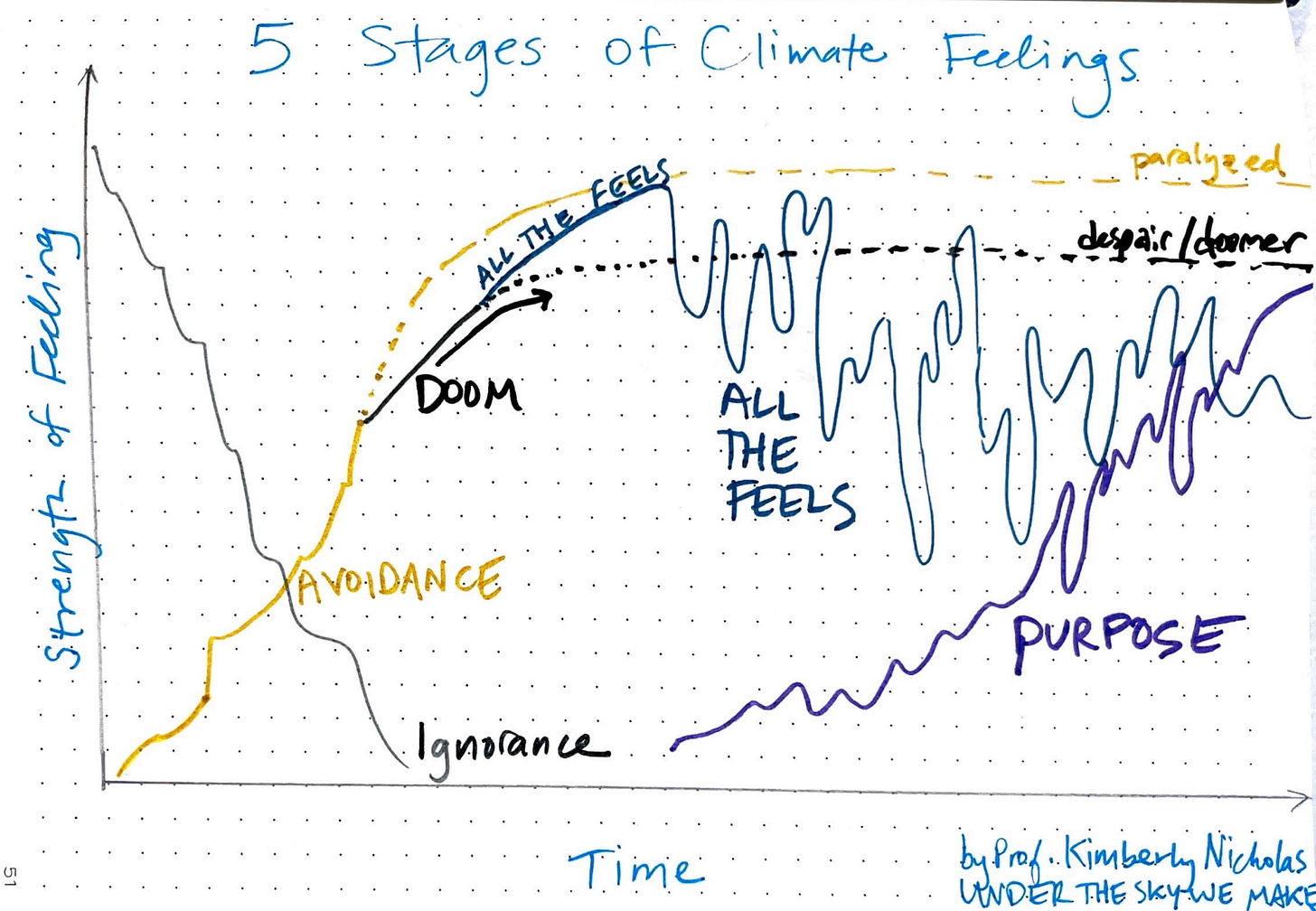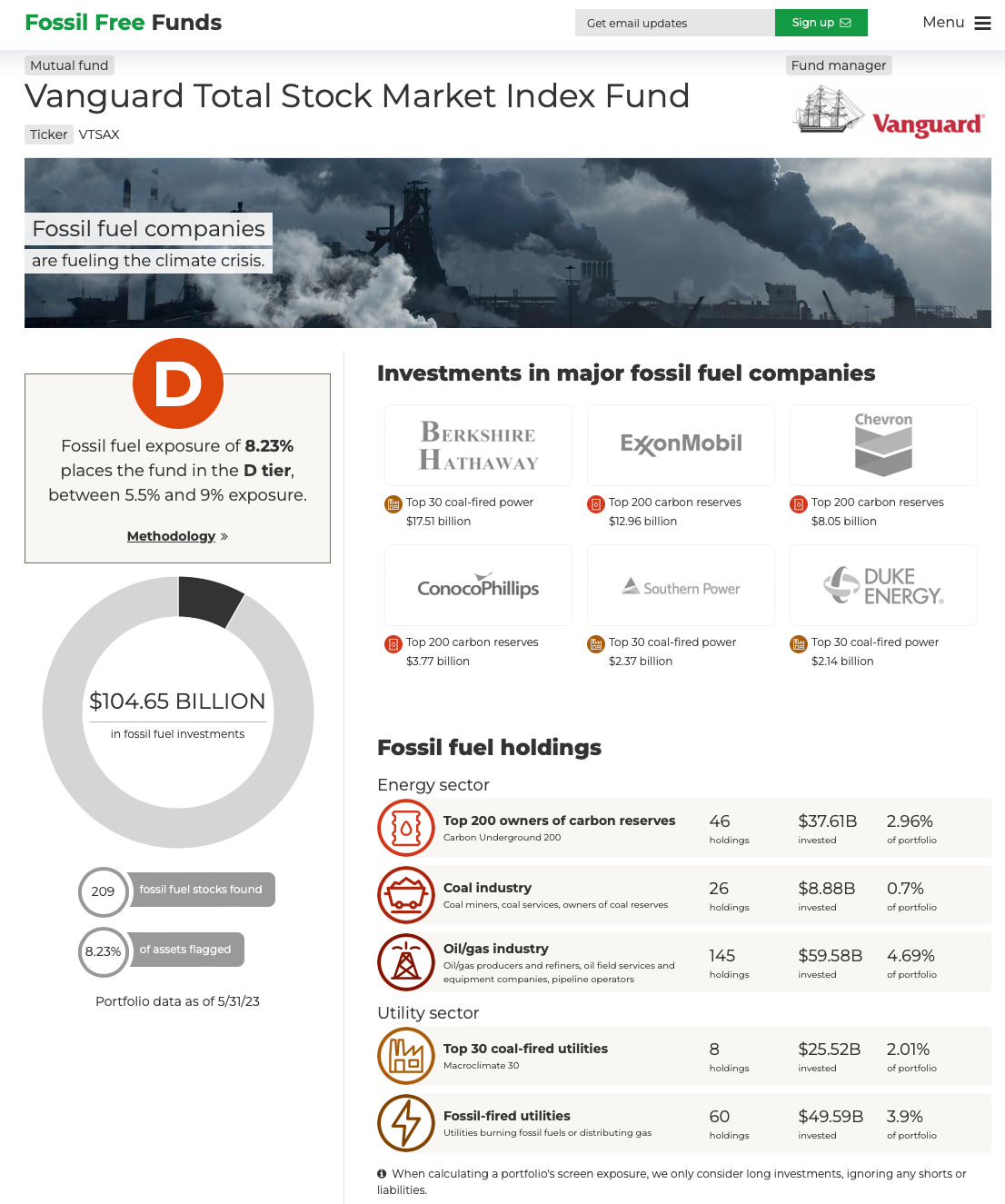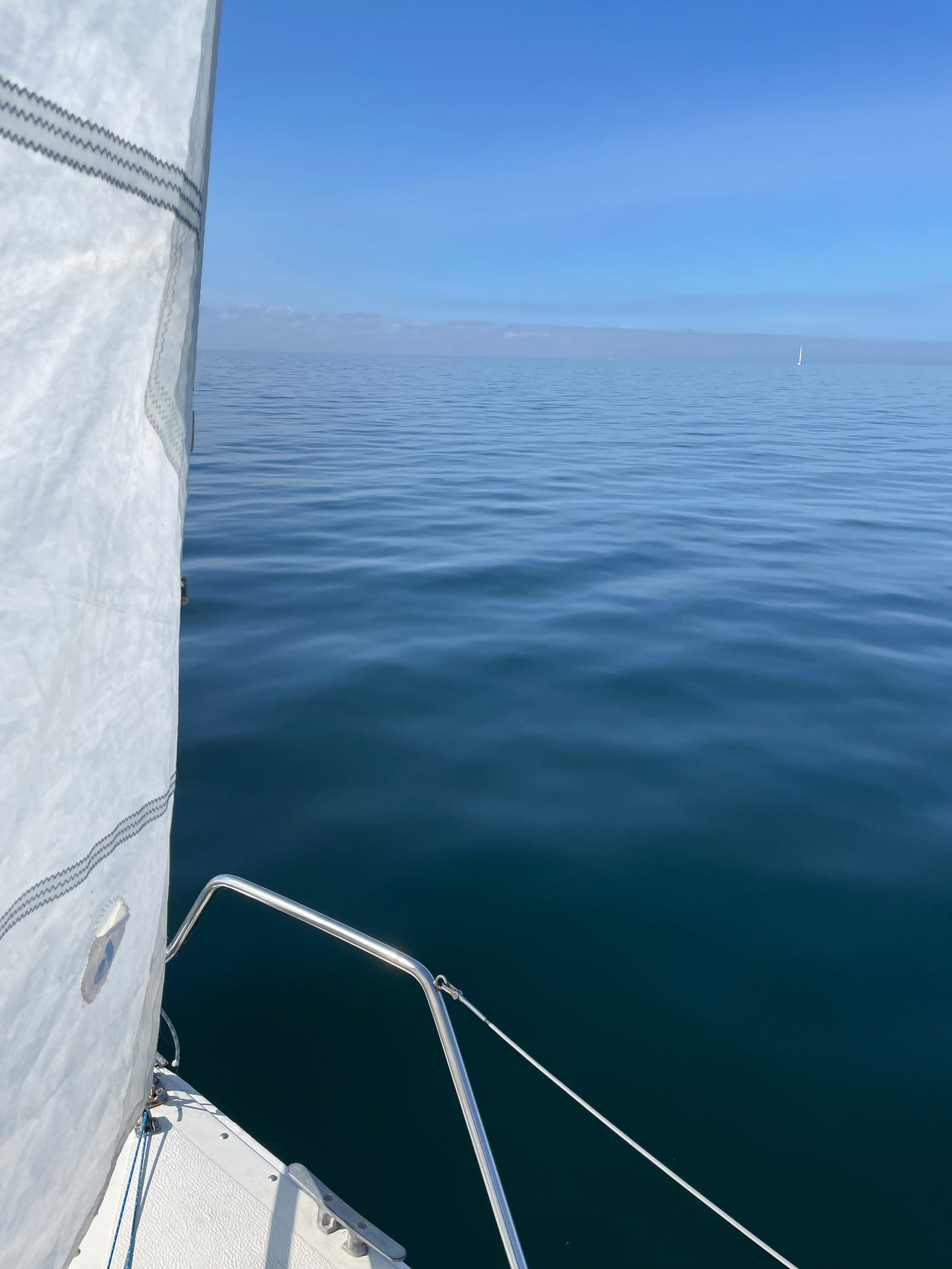5 Stages of Climate Feelings
Facts: Investments pollute🤑💨 | Feelings: 5 Stages of Climate Feelings 🫙 🙈 💀💔🌌 | Action: Divest yourself ⛽️ 💸🌱
Hi friends,
It’s still summer, dang it! That’s my late-August-in-Sweden vibe. Looking forward to crisp fall days; not so much the dark grey winter ones ahead. But let’s jump straight in. This time we’ll do feelings first, then facts, then action!
5 Stages of Climate Feelings
I’ve developed a 5-stage framework for recognizing and navigating climate emotions. I hope you find it helpful!

Ignorance: We all start here. As we learn about the existence and severity of the climate crisis, our ignorance gets chipped away, and is replaced by…
Avoidance: You know the climate crisis is happening. But you scroll past the headlines announcing the latest record-breaking hurricane, wildfire, suffering. You avoid connecting the dots between the global climate crisis and your own life. Avoidance is a way to cope with feeling overwhelmed, anxious, and uncomfortable. But avoidance itself is actually uncomfortable. It takes a lot of energy to live with the cognitive dissonance of not acting on your knowledge and values. (I was stuck in this stage for years about my own frequent flying.)
Doom. One day, it becomes less uncomfortable to face the cognitive dissonance than continue to avoid it. You might Google yourself down a black hole and feel scared, paralyzed, lonely, or hopeless. This is rock bottom. If you get stuck here, you may wallow in despair, or take self-righteous solace as a climate doomer to absolve yourself of all these uncomfortable feelings. :(
All the Feels: If instead, you find ways to acknowledge and tolerate all the uncomfortable emotions, like grief and anger, that are healthy responses to the climate crisis, you get on a better path. You practice ways to notice as these feelings come and, inevitably, go. You do things that make you feel good and build up your physical and mental health and social connections. You know the list: exercise, time in nature, sleep, healthy eating, mindfulness, therapy, music, journaling, wine and laughter and tears with BFFs... These practices ground you in the present, and keep you resilient for the long haul, surfing the waves of all the climate feels. Building and strengthening community lets you pick others up when they’re down; they do the same when you need them.
Purpose. You harness the strength of your feelings to use the climate crisis as a crucible to create meaning in your life. You pursue goals chosen to serve your core values and take care of what matters most to you. You find ways to combine what you love, are good at, and have fun doing to offer your talents towards what the world needs.
What do you think, does this resonate with your experience?
This section is drawn from Part II of Under the Sky We Make.
Facts: Investments Pollute
For the wealthiest Americans, their most polluting possession is not a second home, bulky SUV, or even a private jet. It’s their investment account.
We’ve long known that investments matter for climate (see: the fossil fuel divestment campaign, or our study identifying investor as one of 5 Climate Superpowers).
With a new study, we now have a more complete picture of how money gets turned into climate pollution.
Studies of household income usually look at wages (the paycheck you bring home). This new study led by Jared Starr also included income from investments (like stocks and funds) and retirement accounts.
Key findings:
For the top 1% of American households (total income starting at $554,000), investments pollute a lot (olive bars in the graph below).
Investments are the largest source of emissions for the top 0.1% (households with incomes of $2.2 million or more; bar furthest to the right).
The 10% poorest households pollute about 2 tons/year. The wealthiest 0.1% emit more than 1,000x that much.
The group that pollutes the most in total is the “next 9%”, 90-99% (the widest bar in the graph below). This group has total household incomes starting at $179,000.

This study also reaffirms:
Income is basically equivalent to emissions. There’s a very strong relationship between higher income = higher emissions. Thus, income inequality drives emissions inequality.
The rich pollute a lot, and the poor pollute very little. The poorest 50% of households cause about 10% of climate pollution (green box above). The richest 10% of households cause 4x that much (orange box).
Inequality is large and growing for both income and emissions. :(
The authors suggest a carbon tax on investments in this video and this piece in The Conversation.
Big picture:
“At the moment, the way the economy works is that it takes money and turns it into climate pollution that is destabilizing life on Earth. And that fundamentally has to change.”
-Me to Laura Paddison in a CNN interview about this study
Want to make your investments aligned with climate solutions? Keep reading! :)
Action: Divest Yourself
If you’re in the fortunate group who owns investments (like pension funds, mutual funds, or company stocks)… they probably have a big carbon footprint.
➡️ Check the climate grade of your portfolio at fossilfreefunds.org.
Here’s an example for a popular mutual fund from Vanguard (valued at $1.3 trillion).
I typed the ticker symbol into the Fossil Free Funds search:

This behemoth gets a grade of D. The fund has over $100 billion invested in fossil fuel companies like ExxonMobil, Chevron, and ConocoPhillips. Yikes.
What do you do if your portfolio looks like this??
In brief:
Divest— Get rid of the dirty stuff (sell or donate it to a nonprofit), then
Reinvest your money in good stuff that supports climate solutions!
There are lots of options out there. Discuss with a financial advisor what makes sense for you.
Handy guides:
Action Toolkit and Resources for Investing from Fossil Free Funds
5 Steps to a Sustainable Retirement Plan from Invest Your Values
In case it’s helpful, one reinvestment option I personally chose is Etho Climate Leadership. It’s a diversified fund of climate leaders in their respective industries. Companies must be at least 50% more decarbonized than their industry peers (nerd out on methodology). All fossil fuel companies are completely excluded.
Parting Tidbits
I talked with Nathan Zvi on The Net Zero Life about
some of my favorite climate books (3:00),
how studying climate now is different than when I was a student (“my students are running into a building that’s on fire, and they know that”; 11:00),
and whether development needs can justify fossil fuel use (39:00).
Listen here:
Book Recommendation
Once There Were Wolves, by Charlotte McConaghy. Haunting, fierce, and tender climate fiction about a woman trying to reintroduce wolves and rewild Scotland, over the objections of her new neighbors. A beautiful reflection on the web of life.
xo,
Kim
P.S. Simon and I got a sailboat!! Low-carbon adventures, here we come!





Loved this one and will use with a new student group I'm going to start! A sailboat!!!
This is great and I'm going to use it in a talk, with credit!
best, Richard